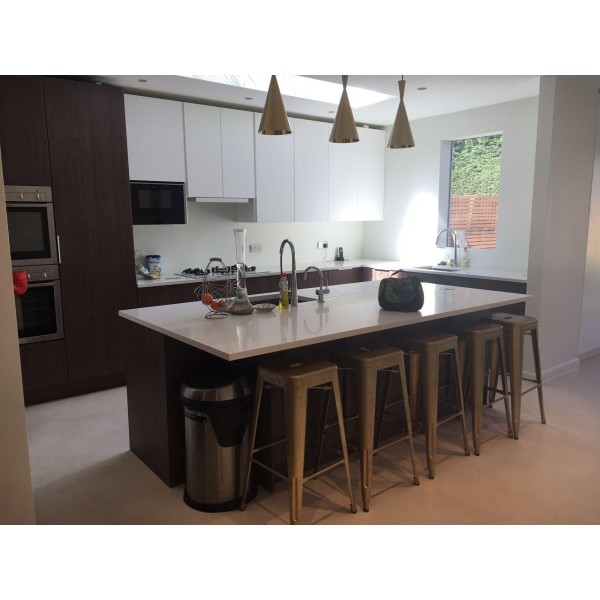Introduction to Garden Rooms
Garden rooms are becoming increasingly popular as homeowners seek to expand their living space without the hassle of traditional home extensions. These versatile structures offer a unique blend of indoor comfort and outdoor charm, providing a perfect retreat right in your backyard. Whether you're looking to create a home office, a gym, or a cosy reading nook, garden rooms offer endless possibilities.
What Are Garden Rooms?
Garden rooms are standalone structures typically situated in a garden or backyard. They are designed to be used year-round, offering a comfortable and functional space separate from the main house. Unlike sheds or greenhouses, garden rooms are fully insulated and often come equipped with electricity, heating, and even plumbing.
The Evolution of Garden Rooms
Historically, garden rooms have been used as summerhouses or conservatories. However, with advancements in building materials and design, they have evolved into sophisticated spaces that can serve a multitude of purposes. Modern garden rooms are often constructed using sustainable materials and are designed to blend seamlessly with the natural environment.
Benefits of Having a Garden Room
Garden rooms offer numerous benefits that make them an attractive addition to any home. Here are some of the key advantages:
- Increased Living Space: They provide additional space without the need for costly home extensions.
- Versatility: Garden rooms can be customised for various uses, from offices to art studios.
- Connection with Nature: Being surrounded by greenery can enhance relaxation and creativity.
- Property Value: A well-designed garden room can increase the value of your property.
- Quick Installation: Compared to traditional extensions, garden rooms can be installed relatively quickly.
Designing Your Perfect Garden Room
Designing a garden room involves several considerations to ensure it meets your needs and complements your garden. Here are some tips to help you design the perfect garden room:
Choosing the Right Location
The location of your garden room is crucial. Consider factors such as sunlight, privacy, and accessibility. A south-facing position can maximise natural light, while a secluded spot can offer more privacy.
Selecting Materials and Style
Garden rooms can be constructed from various materials, including wood, glass, and metal. The choice of materials will affect the room's aesthetics, durability, and insulation properties. Consider a style that complements your home and garden, whether it's modern, rustic, or traditional.
Incorporating Eco-Friendly Features
Many homeowners are opting for eco-friendly garden rooms that minimise environmental impact. Consider using sustainable materials, solar panels, and energy-efficient insulation to create a green space.
Popular Uses for Garden Rooms
Garden rooms are incredibly versatile and can be tailored to suit a wide range of purposes. Here are some popular uses:
Home Office
With the rise of remote working, garden rooms have become a popular choice for home offices. They offer a quiet and dedicated workspace away from the distractions of the main house.
Art Studio
Artists can benefit from the natural light and tranquillity of a garden room, making it an ideal space for creativity and inspiration.
Gym or Yoga Studio
Transform your garden room into a personal fitness space. With the right equipment and flooring, you can create a gym or yoga studio that caters to your workout needs.
Guest Accommodation
Garden rooms can be designed as comfortable guest accommodations, complete with a bedroom and bathroom facilities.
Building Regulations and Planning Permission
Before constructing a garden room, it's essential to understand the building regulations and planning permissions that may apply. In many cases, garden rooms fall under permitted development rights, meaning you won't need planning permission. However, there are exceptions, especially for larger structures or those in conservation areas.
Understanding Permitted Development
Permitted development rights allow certain building works and changes to be carried out without planning permission. For garden rooms, this typically includes structures that are single-storey, have a maximum height of 2.5 metres, and are not used as a separate dwelling.
When Planning Permission Is Required
If your garden room exceeds the permitted development criteria, you may need to apply for planning permission. This could include larger structures, those with plumbing for a bathroom, or if your property is listed or in a conservation area.
Cost Considerations for Garden Rooms
The cost of a garden room can vary significantly depending on size, materials, and features. Here's a breakdown of potential costs:
Basic Garden Room
A basic garden room with minimal features can cost between £5,000 and £10,000. This typically includes a simple design with basic insulation and no plumbing or electricity.
Mid-Range Garden Room
For a mid-range garden room with better insulation, electricity, and heating, expect to pay between £10,000 and £20,000. These rooms often include more customisation options and higher-quality materials.
Luxury Garden Room
Luxury garden rooms with all the bells and whistles, such as high-end finishes, plumbing, and bespoke designs, can cost upwards of £20,000. These rooms are often fully customised to the homeowner's specifications.
Maintenance and Longevity of Garden Rooms
Proper maintenance is essential to ensure your garden room remains in good condition and lasts for many years. Here are some maintenance tips:
Regular Cleaning
Keep your garden room clean by regularly dusting and wiping down surfaces. Clean windows and doors to maintain clear views and prevent mould growth.
Inspecting for Damage
Regularly inspect your garden room for signs of damage, such as leaks, cracks, or rot. Address any issues promptly to prevent further deterioration.
Seasonal Maintenance
Perform seasonal maintenance tasks, such as checking the roof for debris, ensuring gutters are clear, and inspecting insulation before winter.
Frequently Asked Questions
- Do garden rooms require planning permission? In most cases, garden rooms fall under permitted development rights, but larger structures may require planning permission.
- Can garden rooms be used year-round? Yes, garden rooms are designed to be used year-round, with proper insulation and heating.
- How long does it take to build a garden room? The construction time can vary, but most garden rooms can be completed within a few weeks.
- Are garden rooms eco-friendly? Many garden rooms are built using sustainable materials and can include eco-friendly features like solar panels.
- Can I install plumbing in a garden room? Yes, plumbing can be installed, but it may require planning permission and increase the overall cost.
- What is the average lifespan of a garden room? With proper maintenance, a garden room can last 20 years or more.
Conclusion
Garden rooms offer a fantastic opportunity to expand your living space and enhance your lifestyle. With their versatility, aesthetic appeal, and potential to increase property value, they are a worthwhile investment for any homeowner. Whether you're seeking a peaceful retreat, a productive workspace, or a place to entertain guests, a garden room can be tailored to meet your needs and bring your vision to life.























